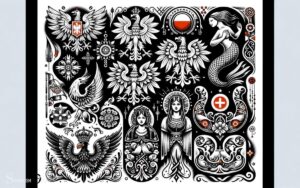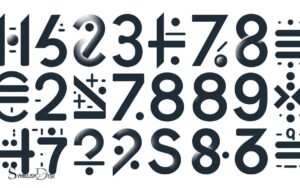What Does the Snowflake Thermometer Symbol Mean? Explain!
The snowflake thermometer symbol, often seen in weather forecasts and car dashboards, is a warning indicator that the temperature is near or below freezing, which could lead to icy conditions.
The snowflake thermometer symbol is designed to alert you when the temperature drops to a point where it could create slippery or icy conditions, such as on roads or sidewalks.
This can occur when the temperature falls to around 32°F (0°C) or below. In vehicles, this alert can help drivers to take extra precautions when driving to prevent accidents.
The snowflake thermometer symbol is more than just an icon; it’s a safety feature that warns of freezing temperatures that could lead to dangerous conditions.
Whether it’s on your car dashboard or weather app, the symbol serves as a reminder to act cautiously in icy conditions. Its purpose is to prevent accidents and ensure safety.
Key Takeaway
5 Aspects: The Snowflake Thermometer Symbol Meanings
| Aspect | Meaning |
|---|---|
| Symbol | The snowflake thermometer symbol generally represents a ‘freezing’ or ‘low temperature’ condition. |
| Usage in Weather Forecast | In meteorology, this symbol is commonly used to indicate the possibility of frost or freezing conditions. |
| Usage in Cars | In vehicles, it could appear on the dashboard to warn the driver of potentially icy road conditions due to low outside temperatures. |
| Usage in Refrigeration and Air Conditioning Units | For refrigeration and air conditioning units, this symbol shows that the appliance is in the cooling or freezing mode. |
| Usage in Smartphones | In smartphones, the symbol may appear when the device is too cold to operate efficiently. |
What Is The Snowflake Thermometer Symbol?
Definition And Meaning
The snowflake thermometer symbol is an icon used commonly in weather forecasts. It looks like a snowflake inside a thermometer and represents temperature ranges that are below freezing point.
Here are some key points to help you understand the snowflake thermometer symbol:
- The thermometer symbol is used to indicate a low temperature ranging from 0°c to -5°c.
- It is often seen in winter weather forecasts and indicates that the temperature is likely to be below freezing.
- The symbol is useful for people who need to know what kind of clothes to wear or what precautions to take when going outdoors on a cold day.
- It is also often used by transportation authorities to highlight potentially dangerous driving conditions.
How Is It Used In Weather Forecasting?
The snowflake thermometer symbol is used in weather forecasting to warn people of potentially dangerous conditions.
Here are some key points to help you understand how it’s used in weather forecasting:
- The snowflake thermometer symbol is used to indicate a temperature range that is below freezing point, which can cause a range of weather conditions such as snow, ice, and sleet.
- The symbol is typically used in winter weather forecasts, when the temperature is known to be dangerously low.
- The symbol is useful for people who need to know whether it’s safe to drive, whether they need to wear extra layers, or whether there is a risk of hypothermia.
- It is also commonly used in aviation weather forecasts to help pilots decide whether it’s safe to take off or land in certain conditions.
Overall, the snowflake thermometer symbol is a useful tool for weather forecasters and the general public to understand the potential risks associated with cold weather conditions.
By keeping an eye out for this symbol, people can better prepare themselves and stay safe.
Why Is The Snowflake Thermometer Symbol Important?
What does the snowflake thermometer symbol mean: why is the snowflake thermometer symbol important?
The winter season comes with its unique weather patterns that affect daily life. Accompanied by snow storms and icy roads, winter weather can make daily commuting, socializing, and running errands challenging.
Having a way to determine how cold the temperature is at any given time is crucial to your safety and wellbeing. One essential tool that helps with this is the snowflake thermometer symbol.
The Impact Of Snow On Daily Life
Winter weather can have several significant impacts on daily life.
Some of these include:
- Disrupting travel plans: Heavy snow can lead to cancellations or delays in public transportation, leading to missed appointments, missed work, and other disruptions.
- Making it harder to move around: Icy roads and slippery sidewalks can pose a significant risk of injury, making it harder to move around safely.
- Increase in heating bills: As the temperature drops, heating bills often go up as households try to keep their homes warm and comfortable.
- Health risks: Exposure to extremely cold weather can result in hypothermia, frostbite, and other health risks.
How The Symbol Helps In Planning Daily Activities
The snowflake thermometer symbol provides users with critical information on how cold the temperature outside is.
Here are ways this information can help plan daily activities.
- Dressing appropriately: Knowing the temperature helps one dress accordingly to avoid over or underdressing, making sure they are comfortable while outside.
- Planning outdoor activities: Having an idea of how cold or mild the temperature is can help in planning outdoor activities more efficiently. For example, short spurts of physical activity may be possible without endangering your health.
- Anticipating traffic and delays: Knowing the temperature and expected weather conditions helps prepare for delays or traffic disruptions due to the weather.
Failing to prepare for winter weather conditions can lead to unnecessary risks.
Whether it’s switching up your commute method, bundling up in winter gear, or planning outdoor activities, the snowflake thermometer symbol provides essential information to help you make informed decisions and stay safe.
Understanding Weather Forecasting
An Overview Of The Science Of Weather Forecasting
Weather forecasting is a complex process that involves a variety of scientific instruments and models. Meteorologists use a variety of data sources to create weather predictions.
The information used includes past weather data, current weather conditions, and sophisticated computer models.
While weather forecasts can never be 100% accurate, advances in technology and modeling have significantly improved forecast accuracy in recent years.
Here are some key points to understand about the science of weather forecasting:
- Meteorologists gather information about weather conditions from a variety of sources, including satellite imagery, radar, and surface observations.
- This information is combined and analyzed to create a model that predicts future weather conditions.
- Weather models are not perfect, and forecast accuracy decreases the further into the future the prediction goes.
- Meteorologists use their expertise and experience to fine-tune forecast models and provide the most accurate predictions possible.
How Do Meteorologists Predict Snowfall?
Meteorologists use several factors to predict snowfall amounts.
Typically, they look at the following information to determine how much snow a particular area will receive:
- The temperature: The colder the air, the more likely it is to snow. If the temperature is too warm, the snow will turn into rain.
- Moisture in the air: In order for snow to form, there must be moisture in the air. Meteorologists look at the amount of moisture in the atmosphere to determine if it is likely to snow.
- Storm track: The path of the storm that brings the snow can impact how much snow an area receives. If the storm changes course, the amount of snow in a given area can change.
When looking at these factors, meteorologists use computer models to create a snowfall forecast.
These models take into account current weather conditions, past weather data, and a variety of other factors to predict how much snow an area is likely to receive.
Understanding the science of weather forecasting and how meteorologists predict snowfall can help people better prepare for winter storms.
By knowing what to expect in terms of temperature and snowfall amounts, individuals and communities can make better decisions about travel, stocking up on supplies, and staying safe during extreme weather events.
How Is The Snowflake Thermometer Symbol Determined?
The snowflake thermometer symbol is a simple representation of weather conditions that indicate whether it’s snowing.
The snowflake symbol has become increasingly popular in weather reports and forecasts, allowing people to know what to expect outside without leaving their homes.
How is the snowflake thermometer symbol determined? Here, we will delve deeper into the factors that influence the symbol prediction, and its relationship with temperature.
Factors That Influence The Symbol Prediction
Several factors influence the snowflake thermometer symbol prediction.
These include:
- Air temperature: A significant factor in predicting whether it will snow is the temperature, as it has to be below freezing point for snow to form. If the temperature is close to freezing, the symbol might change if there’s even a slight drop in temperature.
- Moisture content: Snowflakes form from moisture, so the amount of moisture in the air plays a crucial role in whether the symbol will change. Even if the temperature is below freezing, the snowflake symbol will not appear unless there’s enough moisture in the air.
- Altitude: Altitude also plays a part in predicting whether it will snow, as the temperature can change with altitude. Higher altitudes usually experience more snowfall than lower ones.
The Snowflake Thermometer Symbol And Its Relationship With Temperature
The snowflake thermometer symbol is a simple visual indication of weather conditions that are colder than the freezing point of water.
Essentially, it tells you whether it’s cold enough to snow. The snowflake symbol is usually attributed to temperature ranges between 20-32°f or -6.
6°c to 0°c. However, there are instances where it can appear when the temperature is as low as 40°f or even colder.
The snowflake thermometer symbol indicates the temperature range where the most common precipitation type is snow.
A lower temperature range means that snowflakes will form and fall from the sky, while a higher temperature range means that it might rain instead.
The snowflake thermometer symbol is an essential tool for indicating weather conditions that are ideal for snowfall.
Several factors, including temperature and moisture content, influence the symbol’s prediction. Understanding how the symbol works can help you plan your day and stay safe during winter weather.
Exploring Different Snowflake Shapes
Types Of Snowflake Shapes
Snowflakes come in different shapes and sizes, each unique in its crystal structure. Snowflake shapes are formed by variations in temperature and humidity at the atmospheric level.
The primary types of snowflake shapes are:
- Dendrite – these snowflakes have a branching structure with six points that look like arms. Dendrite snowflakes are the most common and are often seen in christmas decorations.
- Plate – plate snowflakes are flat and circular. They have six sides that can have a smooth or jagged edge.
- Column – these snowflakes have a cylindrical form and can appear as tiny rods or long needles.
- Needle – needle snowflakes are long and thin and look like tiny ice needles. They often form during very low humidity levels.
- Stellar – these snowflakes have a star shape with long, thin branches that extend from the center. They are rare and only form under specific atmospheric conditions.
The Role Of Snowflake Shape In The Forecasting Process
Meteorologists use the snowflake shape as one of the parameters for determining the forecasted weather condition. By studying the shape of snowflakes, they can forecast the temperature, pressure, and humidity levels of the atmospheric air.
Here are some ways in which the shape of snowflakes helps in forecasting:
Temperature prediction – the shape of a snowflake varies depending on the temperature. Plate snowflakes are formed at warmer temperatures, while dendrite snowflakes form at colder temperatures.
By analyzing the snowflake shape, meteorologists can estimate the atmospheric temperature and predict the forecasted temperature.
Humidity level – the shape of snowflakes also depends on the humidity level of the atmospheric air. Needles and columns form at low humidity, while plates and dendrites form at higher humidity levels. Therefore, snowflake shape is an indicator of the humidity level of the atmospheric air.
Pressure indication – the formation of snowflake shapes is influenced by the pressure level of the atmosphere at which the snowflake forms.
Snowflakes that form under high-pressure weather conditions tend to be smaller and have less complex shapes. Meanwhile, snowflakes that form under low-pressure weather conditions tend to be larger and have more complex shapes.
By analyzing the shape of snowflakes, meteorologists can predict the atmospheric pressure and forecast future weather conditions.
Snowflake shapes not only make beautiful decorations during the winter months but also provide essential information to meteorologists during the forecasting process.
Understanding the different snowflake shapes and the atmospheric conditions that influence their formations can assist us in predicting future weather conditions.
Decoding The Snowflake Thermometer Symbol Variations
The snowflake thermometer symbol can be seen in various locations, from food packaging labels to weather apps, but what does it actually mean?
In short, the snowflake thermometer symbol indicates that a product or location needs to be kept at a specific temperature in order to remain safe for use.
However, not all snowflake thermometer symbols are the same. In this section, we will decode the different variations of the symbol to better understand their meanings.
Different Variations Of The Symbol
There are two primary variations of the snowflake thermometer symbol, each with its own distinct purpose.
Snowflake symbol with one line: This variation of the snowflake thermometer symbol is commonly used on food packaging labels.
It indicates that the product needs to be kept in a cold environment, typically around 32-41°f (0-5°c), to ensure that it remains fresh and safe for consumption.
Snowflake symbol with three lines: This variation of the snowflake thermometer symbol is used in places like refrigerators, freezers, and cold storage areas.
It indicates that the temperature of the area needs to be maintained at or below 0°f (-18°c) to keep the contents at a safe temperature.
What Do The Variations Indicate?
Now that we know the different variations of the snowflake thermometer symbol, let’s take a closer look at what each one means.
Snowflake symbol with one line:
- Indicates that the product needs to be kept in a cold environment, typically around 32-41°f (0-5°c).
- This symbol is used on perishable food items, such as meat, dairy, and produce.
- It is important to follow the storage instructions on the label to prevent the growth of harmful bacteria and ensure food safety.
Snowflake symbol with three lines:
- Indicates that the temperature of the storage area needs to be maintained at or below 0°f (-18°c).
- This symbol is commonly found on freezer doors in households and commercial kitchens alike.
- Keeping the freezer at the proper temperature ensures that frozen goods remain safe for consumption and retain their quality.
Understanding the different variations of the snowflake thermometer symbol is crucial for maintaining food safety and product quality. By keeping products at the correct temperature, we can ensure that they remain fresh and safe for use.
Interpreting The Snowflake Thermometer Symbol
The snowflake thermometer symbol is a unique feature of a weather forecast that provides useful information about the weather conditions.
The symbol has different components that convey specific meanings. Understanding these components is crucial for interpreting the symbol accurately.
Below are the different components of the snowflake thermometer symbol and what they mean:
The Different Components Of The Symbol
The snowflake thermometer symbol consists of three parts:
- A snowflake
- A thermometer
- A temperature value
These elements combine to create a meaningful representation of the weather. Here are some details about each component of the symbol:
The Snowflake
The snowflake in the symbol represents precipitation. This can either be snow, sleet or freezing rain based on the temperature indicated. The snowflake is white in color, making it easy to identify in the symbol.
The Thermometer
The thermometer in the symbol is used to measure the temperature of the atmosphere. This provides critical information about how the precipitation will behave. Is it going to be powdery snow or is it going to be a wet snow that will stick to the roads and buildings?
The Temperature Value
The temperature value in the symbol indicates the temperature at the ground level. This is the temperature that is measured by the thermometer in the symbol.
The temperature value is essential when interpreting the snowflake thermometer symbol because it determines the type of precipitation that will occur.
What Do They Mean?
Now that we have explored the different elements of the snowflake thermometer symbol, it is essential to understand what each component means when interpreted together.
Here is what the snowflake thermometer symbol communicates:
- The snowflake indicates precipitation
- The thermometer indicates temperature
- The temperature value determines the type of precipitation (snow, sleet or freezing rain)
The snowflake thermometer symbol is an important feature of weather forecasting. Understanding its different components and the meanings they convey is essential for correctly interpreting the symbol.
Knowing what the symbol communicates can help you make informed decisions about how to prepare for the weather in your area.
Tips For Accurate Snowfall Predictions
How To Read Weather Reports
When it comes to weather reports, understanding the symbols used can be essential for accurate predictions.
Here are some tips on how to read weather reports:
- Look for the snowflake thermometer symbol: The snowflake thermometer symbol indicates the potential for snowfall. It shows the temperature at which it is likely to snow and how much snow is expected.
- Consider the temperature: If temperatures are near freezing, snow or sleet is more likely than if it’s several degrees below freezing.
- Take note of precipitation type: Not all forms of precipitation are the same, so look for information on whether the snow is likely to be dry or wet, or whether sleet or freezing rain is in the forecast.
Important Factors To Consider When Interpreting The Snowflake Thermometer Symbol
The snowflake thermometer symbol can be a useful tool for predicting snowfall, but it’s important to interpret it correctly.
Here are some key factors to consider:
- Temperature: The temperature at the top of the snowflake thermometer symbol indicates the expected temperature when the snow is falling. Lower temperatures generally mean drier, lighter snow, whereas higher temperatures can produce wet, heavy snow.
- Snowfall amount: The size of the snowflake on the snowflake thermometer symbol indicates the expected amount of snow. The larger the snowflake, the larger the amount of snowfall.
- Timing: The snowflake thermometer symbol is often used to predict snowfall over a specific amount of time, usually 6-12 hours. Be sure to check the timing to get an accurate prediction.
- Location: The amount of snowfall can vary greatly depending on your location, so look for local weather reports to get the most accurate snowfall predictions.
Remember, weather reports are not always 100% accurate, but understanding the snowflake thermometer symbol and other weather symbols can help you make more informed decisions when it comes to travel, outdoor activities, and other plans.
Conclusion
Finally, understanding the meanings behind the symbols on your weather app can help you stay prepared for any kind of weather. The snowflake thermometer symbol is one of the most important symbols to pay attention to.
It tells you that temperatures are near or below freezing, which means that the conditions outside could be icy and hazardous.
The symbol is a reminder to be cautious when driving or walking and to dress appropriately for the weather.
Knowing the meaning behind this symbol can help you plan your day accordingly, whether it’s changing your driving route or making sure to wear warm clothes and appropriate footwear.
So, the next time you see that snowflake thermometer symbol on your weather app, take note of its meaning and be prepared for any potential hazards that come with freezing temperatures. Stay safe and enjoy the winter weather!






